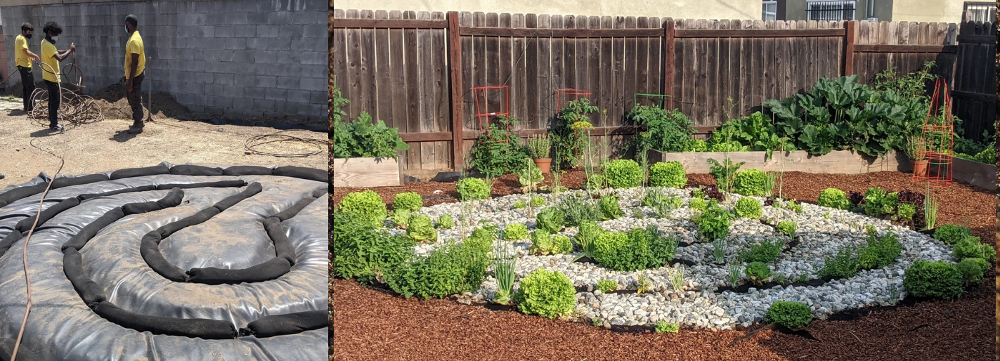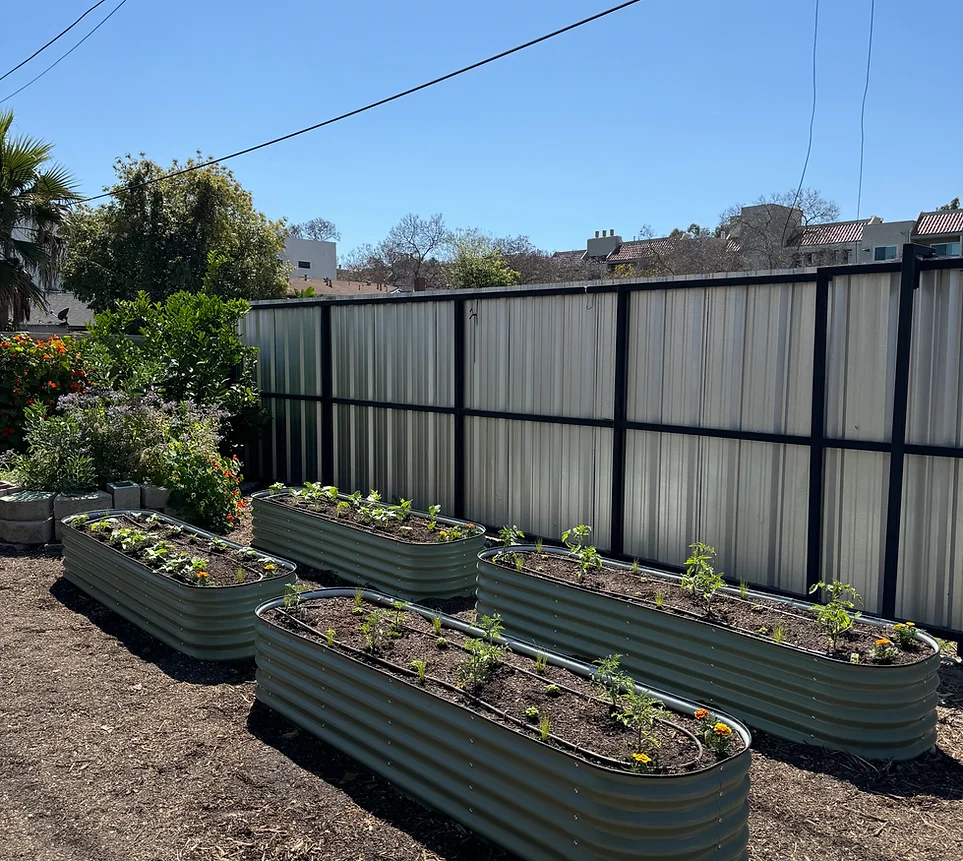Sign up for daily news updates from CleanTechnica on email. Or follow us on Google News!
Grass may be the ultimate status symbol. Nothing confirms one’s social status like a verdant lawn — not a Lamborghini in your driveway or an infinity pool in your backyard. Some cynics claim the reason golf is so popular is because it is played in lush surroundings on a lawn that stretches out as far as the eye can see for miles into the distance. People spend inordinate amounts of time and money planting, mowing, fertilizing, and weeding their lawns.
I never knew my father. Oh, I recognized him when he sat across from me at the dinner table, but most of the time he was outside tending to his beloved lawn. If he saw a bit of crabgrass growing, he was on it in a trice, armed with special tools he found at Sears designed specifically for ripping the offending flora out by its roots. I always assumed that one day I would grow up to have the perfect lawn myself, and in a way I did.
I now live in South Florida, where an army of workers is kept busy every day tending to the lawns in the community. Everyone complains about the high cost of their condo association dues, but a significant portion of their monthly expense involves maintaining their lawn. It needs to be watered, so they have to pay people to install and maintain irrigation systems. They have to pay more people to put chemicals on the lawn to control weeds and fertilize it. Once it is verdant and thriving, they have to pay to have it cut. Then the clippings have to be disposed of using gasoline-powered blowers that sound like a 747 revving up for takeoff.
An End To The Lawn As We Know It

In Los Angeles, an organization called Crop Swap LA is teaching urbanites how to rip out their lawn and replace it with a garden. Once that process is complete, they can enjoy fresh fruits and vegetables themselves. Many live in so-called “food deserts” where such things are not commonly available at the local convenience stores. In addition, they can share their bounty with others directly or let Crop Swap LA help distribute it for them.
Beverly Lofton is one person who lives in south Los Angeles who has embraced the Crop Swap LA program. She told The Guardian recently that where her lawn used to be is now a verdant microfarm that uses solar power and recycled water to grow carrots, beets, potatoes, and more. Much of what the garden produces is shared with her neighbors. Not only that, she now uses far less water than she did when her house was surrounded by a lawn. Crop Swap LA took out all her grass and helped her install the new raised bed gardens that took its place. It added a reservoir and a drip irrigation system that uses recycled water. Before, her water bill was as much as $200 a month. Now it is less than $20 a month. Not only that, the Los Angeles Department of Water and Power rewarded her with a $4500 rebate when she removed her lawn.
“We’ve grown a lot of dark leafy greens, bok choy, collard greens, string beans. Crop Swap LA also grows carrots, beets, radishes, potatoes and anything that needs a deeper root system in grow bags called GardenSoxx. And we have a grapevine, so we’ll have Concord grapes this year. The microfarm is solar powered and has on-site composting. I was not surprised that all these things could grow, because when we remodeled our house in 2006, a crew tore up the grass and it came back. Anything with roots wants to grow on this land,” she said.
Sharing With The Community

Since the microfarm is part of Crop Swap LA, its team members come and maintain the garden a few times a week. They harvest on Sundays and often leave samples of what was harvested that day. Crop Swap LA offers an affordable membership to neighbors within a one mile radius of Lofton’s house which entitles them to receive at least two pounds each week of freshly harvested vegetables and fruit. In a community where grocery stores are virtually nonexistent, that is especially welcome.
“Knowing food grown in my front yard is feeding people in our neighborhood feels amazing. Most people who see the microfarm are thrilled it’s in the community and they sometimes offer advice or stories about their gardening experience or desire to start planting. One gentleman stopped by to show me photos of his garden. It’s even better when Crop Swap LA workers are here because they can share their expertise and encourage everyone to participate in making our community better.”
“When I was a child, my grandparents lived 1.5 miles from where I am now and they had a beautiful garden in the backyard, but I never learned the science of planting, pruning, and harvesting from them. I feel like I’ve redeemed myself. It’s very satisfying and I don’t understand why more people don’t do it, especially with the rebate program we have here. Hopefully I can be an example of what’s possible,” Lofton said.
The Takeaway

Crop Swap LA is a remarkable organization doing remarkable work. It offers advice on what kinds of raised bed gardens will work best for individual families, helps with the installation of the irrigation systems, and manages the distribution for the produce within the community. This is the living embodiment of what a community should be. I once owned a house near Lunenberg, Nova Scotia. One of my neighbors pointed out the plot of land his family used to grow fresh food during the Depression. It was about the size of a one-car garage and fed a family of five, a fact I found hard to believe at the time.
There is another dimension to this story. Fresh food is often unobtainable to city dwellers, who exist on pre-packaged, ultra-processed food that has little to no nutritional value. Not to put too fine a point on it, if it comes in a can or a hermetically sealed package, what’s inside may not be fit to eat. People wonder why the incidence of serious illnesses and behavioral disorders today seems to be increasing. Part of the answer may be the food we eat is literally poisoning us. Growing fresh food instead of cultivating a lawn may be the smartest thing we can do to live a long and healthy life. In the final analysis, we are what we eat.
Have a tip for CleanTechnica? Want to advertise? Want to suggest a guest for our CleanTech Talk podcast? Contact us here.
Latest CleanTechnica.TV Videos
CleanTechnica uses affiliate links. See our policy here.




